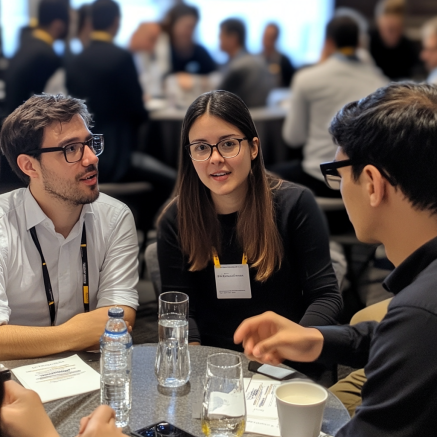I remember the first time I encountered a hard fork. It was chaotic, exciting, and a little overwhelming. Back then, it was all about figuring out what a fork even meant for the future of a blockchain. Fast forward to today, and the Komodo Hard Fork feels like déjà vu—but with more clarity, thanks to experience. This fork is a big deal for anyone in the space, especially engineers. Whether you’re a seasoned blockchain developer or just diving into the crypto world, this hard fork brings a unique set of challenges and opportunities.
Let’s unpack what you need to know and why it matters for engineers working in this evolving space.
1. Hard Fork Basics: Why Komodo?
Komodo’s ecosystem has been known for its emphasis on security and innovation. What sets Komodo apart is its multi-chain architecture, enabling independent blockchains to interoperate while benefiting from Komodo’s security features. But here’s the catch—Komodo has reached a point where certain upgrades require a hard fork.
A hard fork, for those who might not be familiar, is essentially a significant protocol change that isn’t backward-compatible. It’s like when your phone needs a major software upgrade, but instead of just downloading the latest update, you’d need to switch to a brand-new phone that doesn’t work with your old one. For engineers, this means diving into the technical weeds—ensuring that any blockchain applications or services you’ve built will remain functional after the fork.
During my early recruitment days, finding engineers who could handle these sorts of transitions was tough. Most developers I encountered were more comfortable maintaining existing systems rather than adapting to drastic changes. But that’s where the real opportunity lies for engineers today—if you can navigate the complexities of a hard fork like Komodo’s, you’re invaluable.
What’s Changing: Key Technical Upgrades
One of the most exciting aspects of the Komodo Hard Fork is the introduction of enhanced privacy features and performance improvements. Komodo’s commitment to decentralisation and privacy is legendary, but with this fork, they’re taking it a step further. We’re talking about integrating zero-knowledge proofs, streamlining cross-chain functionality, and reducing transaction times.
For engineers, this means staying on top of cutting-edge cryptography and blockchain interoperability. These upgrades are no small feat. I remember speaking with a CTO a few months back who told me that zero-knowledge proofs were becoming the ‘new normal’ in blockchain privacy. But here’s the thing—few engineers are fully equipped to work with them. That’s a massive gap in the talent pool. If you’re an engineer already familiar with zero-knowledge proofs, you’re ahead of the curve. If you’re not, now’s the time to get familiar.
I’ve seen firsthand that engineers who embrace this learning curve are often the ones leading development teams and securing high-paying contracts. In my experience recruiting for blockchain projects, it’s the engineers willing to invest in learning new technologies who stand out.
How It Impacts Engineers: Preparing for the Fork
So, how does the Komodo Hard Fork affect engineers in the trenches? First, you need to ensure your applications are compatible with the new protocol. This isn’t just about patching up existing systems; it’s about anticipating the changes and adjusting your infrastructure accordingly.
One engineer I worked with during a previous hard fork found himself caught off-guard when his company’s entire dApp stopped functioning after the update. The problem? They hadn’t factored in how the fork would alter the underlying consensus mechanism. It was a costly oversight. That’s why preparation is key—engineers need to read through every update, test their applications in sandbox environments, and work closely with their teams to anticipate potential issues.
Komodo’s fork is no different. If you’re running nodes, it’s crucial to update your software as soon as possible to avoid any disruptions. For developers building on Komodo, make sure you’re testing everything on testnet before the fork goes live on the mainnet. I’ve recruited enough blockchain developers to know that the ones who stay ahead of these transitions are the ones who end up leading their projects.
Long-Term Opportunities: What Engineers Stand to Gain
If you’re looking to future-proof your career in blockchain, staying informed about major changes like the Komodo Hard Fork is crucial. Why? Because it’s not just about making sure your current projects survive—it’s about positioning yourself as an expert in an industry that’s rapidly evolving.
The great thing about hard forks is that they force everyone to level up. Engineers who master these upgrades become more than just coders—they become critical problem-solvers. I’ve placed many engineers in senior roles simply because they had the foresight to invest time in understanding the impact of forks and other major protocol changes.
Take the rise of Ethereum developers post-hard fork. After Ethereum’s major updates, those who had experience in managing the transition became hot commodities. The same goes for Komodo. Engineers who can seamlessly navigate this fork will likely be at the forefront of the next wave of blockchain innovation.
If there’s one thing I’ve learned in crypto recruitment, it’s that adaptability is everything. The engineers who thrive aren’t the ones who avoid change but embrace it head-on. The Komodo Hard Fork is another opportunity to do just that.




